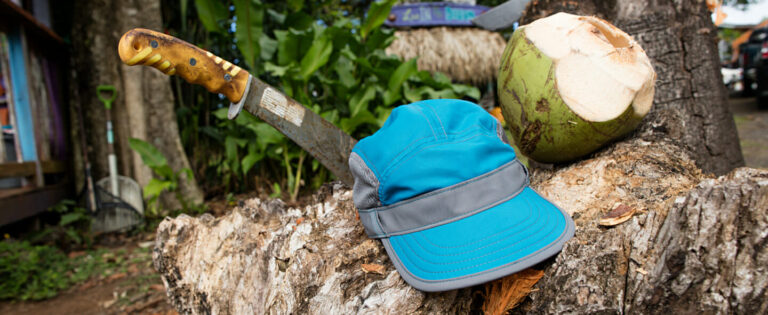
For many people, roaming alone through the vast mountains of Norway, the Cairngorms in Scotland or similarly deserted hiking areas is pure fulfilment, the supreme discipline in hiking or trekking.
The peace and quiet and self-imposed solitude make solo tours a very special experience. You are completely on your own and have to make all the decisions yourself. There is no one with whom you can discuss the route on the map or on whose experience you can rely.
HOW DO I PREPARE FOR A SOLO TOUR?
In addition to physical and mental preparation such as training or dealing with being alone, for me personally, emergency preparedness is also part of good planning. Generally speaking, everyone has to find their own way of preparing for emergencies, so this blog post here can only be a suggestion on how to do it.
Even if you feel well trained and mentally prepared for a solo tour, other things will come into focus before the tour starts. I would like to focus especially on those aspects that sometimes go by the wayside with the motto „It’ll be fine!“.
SAFETY RULES
When you are out and about, whether alone or with others, you should be aware that something can always happen. These eventualities should by no means stop you from going out on your own, you should just be as prepared as possible.
There are simple rules from hiking associations such as the DAV or the popular Norwegian Turistforening DNT that can serve as a guide. They are often dismissed as a bit dusty or „old-school“ in the age of mobile phone apps and high-tech equipment, but they have stood the test of time over decades.
If you follow them, you are simply safer on the road (we replace the „don’t go alone“ point here with extensive emergency preparedness). As an example, here are the Norwegian Fjellvettreglene – they were introduced after 18 people died in the mountains at Easter in 1967:
- Don’t do a long tour without training or good preparation.
- Tell others where you are going.
- Show respect for the weather and pay attention to the weather forecast.
- Be prepared for bad and cold weather, even on short trips. Never go without a rucksack and the equipment needed in the mountains.
- Listen to the advice of experienced hikers.
- Use a map and compass.
- Do not set off alone.
- Turn back in time – there is no shame in turning back.
- Save your strength and dig yourself into the snow in good time if necessary.
WHAT ADDITIONAL TECHNIQUES CAN I USE?
I am deliberately writing about my own approach, which has already proven very successful on very long tours over months or even on shorter hikes over weeks, but which is not necessarily the right strategy for everyone.
Before I went on tours alone, I thought about what could happen. Often on such tours you are far away from civilisation – ergo there is often no reliable mobile phone reception.
The very idea of sitting alone in a tent or hut with an inflamed appendix three days away from the next road or town did not sit well with me. So I asked about a so-called emergency transmitter, with which I can still call for help even if the mobile phone no longer has reception. After accidents in which I am still conscious and can save myself in the tent, bivouac or hut, these transmitters are simply the best way for me to initiate a rescue.
THE EMERGENCY TRANSMITTER

My choice fell on the SPOT Messenger, which communicates via a worldwide satellite network. This has to be registered at findmespot.com, then you can use an extensive service
With the mobile phone-sized SPOT transmitter, I can call for help via an emergency button if the worst comes to the worst. This is then initiated and organised via the international GEOS emergency call centre, which then alerts local rescue forces worldwide. At the same time, two confidants, who are determined in advance, are also notified by telephone. They can then be available to the emergency services for any queries. You can also specify whether you have any pre-existing conditions or need certain medication.
In addition, the SPOT offers the possibility of transmitting one’s current position. The transmitter has a so-called „OK“ button. If you press it, your current position is sent to a previously defined group of people. Via a web form, up to ten people can be specified, who will then receive these coordinates by e-mail or SMS. Furthermore, it is possible to publish the coordinates directly via a Twitter or Facebook account as well as on one’s own homepage. Pretty practical, so the people at home always know where you are.
The transmitter also has a tracking function. This means that you set a time interval beforehand in which the SPOT automatically transmits the current position as soon as this function is activated.
All these functions and services can be individually changed and adapted at any time via the practical web form. You can also create different profiles depending on the tour, so the right people at home are always notified.
Some may now object that with an emergency transmitter in their luggage they cannot experience the ultimate feeling of freedom. I cannot understand this objection at all, because this umbilical cord only works in one direction. There is no way to be contacted by SPOT emergency transmitter from home by email, SMS or phone calls. And anyone who has ever had a broken leg or an inflamed appendix will be happy not to have to crawl through the wilderness for three days with a heavy trekking backpack in an emergency, but to be able to call for help immediately. The investment in an emergency transmitter like the SPOT is worth every euro, I’ll bet!
There are only two things to consider with the SPOT: Firstly, the transmitter uses conventional lithium-ion batteries or rechargeable batteries, these should be replaced, checked and also replaced before each tour. Depending on how often I use the tracking function, the batteries or rechargeable batteries can of course be discharged sooner. However, if I only transmit my location once a day, one set of batteries will last up to a year.
Secondly, the SPOT works via satellites. However, these satellites do not cover all areas of the earth one hundred percent. So if you are planning a solo crossing of the Greenland ice sheet or want to travel in Central Africa, you should check the SPOT website beforehand, which shows the exact worldwide coverage.

THE MOBILE PHONE
There’s no doubt that modern smartphones can be a great help when travelling. You can easily check train departures, book a hostel or read the weather report. In the remote wilderness, however, I would not plan on having either a modern smartphone or a simple old mobile phone as a safety reserve.
I know from my own experience how quickly a mobile phone battery drains when the next mobile phone mast is either very far away or the phone is constantly searching for a connection. In addition, almost everyone knows the problem that batteries discharge very quickly, especially in cold weather.
In addition, damage due to cold, moisture or mechanical destruction – i.e. falling down, etc. – can occur quickly even with simple devices.
POWERS OF ATTORNEY AND INSTRUCTIONS? WILL BE FINE
I think it is important to tell a friend or family at home where you are going and what route you are planning. Especially if you want to go off the marked trail, this is an extra safeguard. There was a recent case of a missing hiker who is still missing in Norway. He had not told anyone his route, and the search for him had to be called off without results.
You should also sign the hut book in every hut or accommodation and indicate where you plan to go next.

One thing that many people don’t really have in mind – or don’t want to have in mind – is the need to have a power of attorney in case of an emergency. If something serious does happen. Without such powers of attorney and dispositions, it can quickly become difficult even for next of relatives to obtain information in hospitals abroad, for example, or to organise repatriation. I also think that a topic that no one really wants should be taken into consideration: How would I like to be buried?
I admit, that’s pretty tough stuff to prepare for a solo tour, but you shouldn’t take this topic lightly if you’re going into the wilderness alone. If it should happen to me, I’d like to spare the people at home the grief and the loss as well as the annoying running around and the decision about the funeral procedure.
Regardless of such a tour, this is a good thing. Once you have made these arrangements, you can safely leave them with a confidant and have them taken care of for quite a while and not just for the next tour.
AND WHAT ELSE CAN YOU DO?
Self-explanatory for me in the mountains are conspicuous clothing and, if possible, a tent in signal colour. You should always carry a carefully assembled first aid kit with you. Personally, I have carried a 500 g kit 3000 km alone through Norway without using it much, but I would always have been well prepared.
Also, one should always choose the right equipment for the appropriate hiking area and the expected weather. What good is it if I save a few euros but then suddenly find myself with an undersized sleeping bag in a summer winter blizzard?
Sure, you take risks on solo trips, but only the ones you are willing to take according to your own opinion and level of experience. If you are unsure about crossing a river or traversing a snowfield, you should not do it.

The most important thing, however, is to maintain humility before nature. Changing the route or even turning back may be bitter or annoying at the moment of the decision, but you don’t want to seriously endanger your life because of a tour, no matter how beautiful.
This is all my personal approach to solo tours. Whether it is exaggerated or just right is something everyone has to decide for themselves. My approach does not necessarily suit everyone, but perhaps it can provide some impulses on how to enjoy the next solo tour in the wilderness with as much pleasure in nature as possible and still be well prepared for an emergency.




